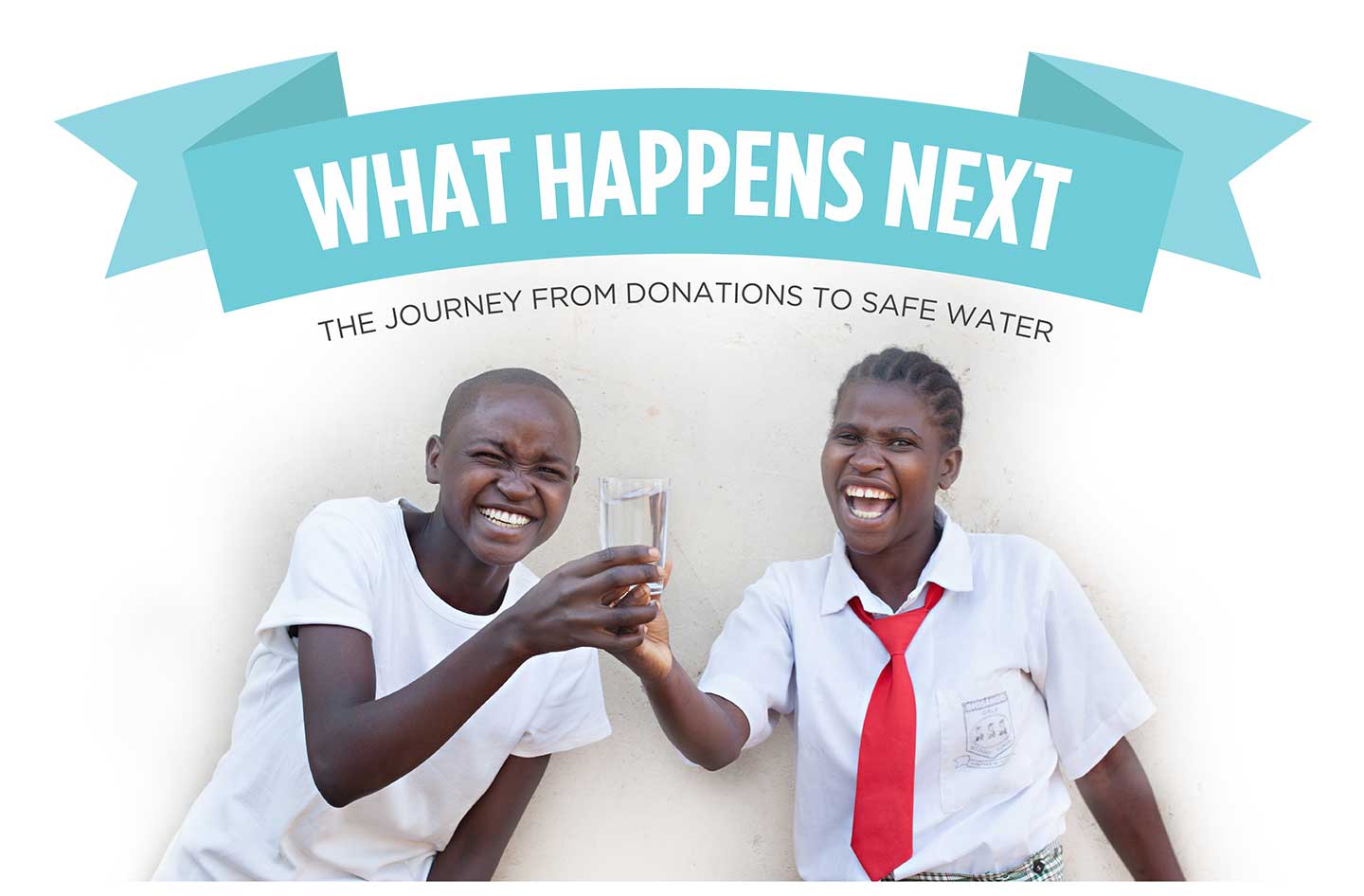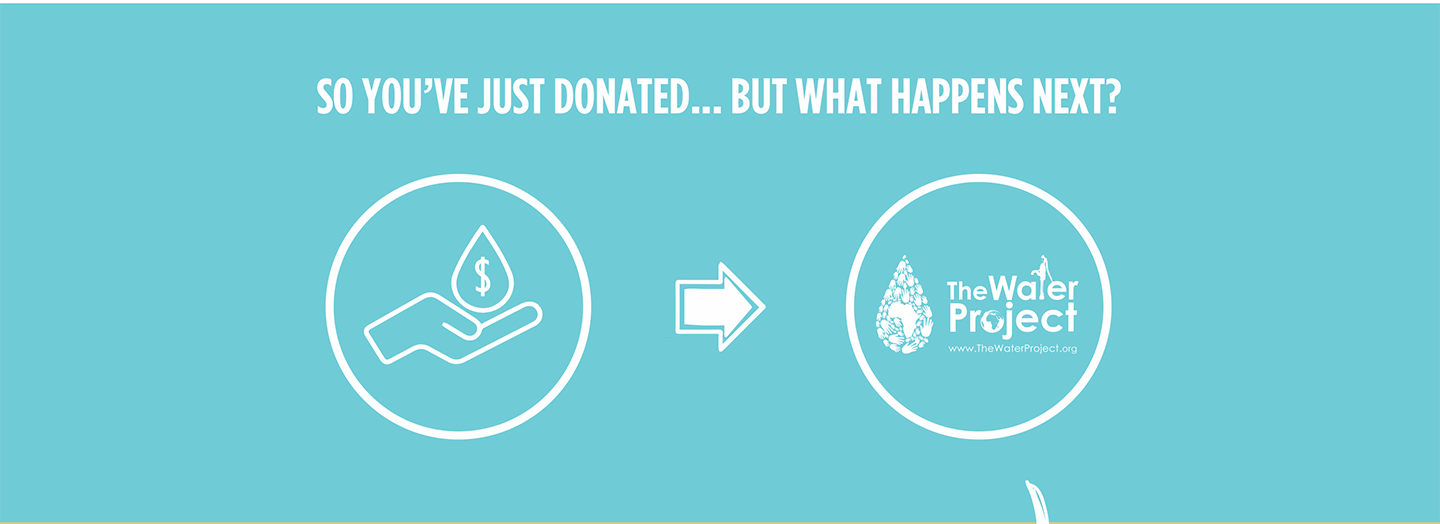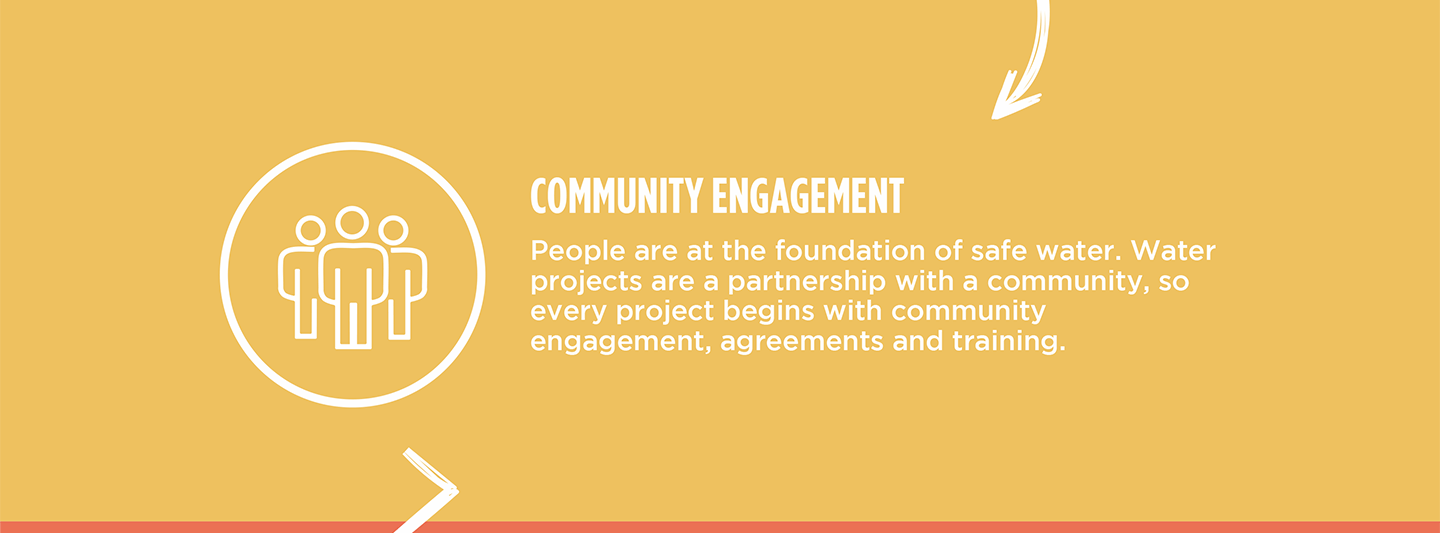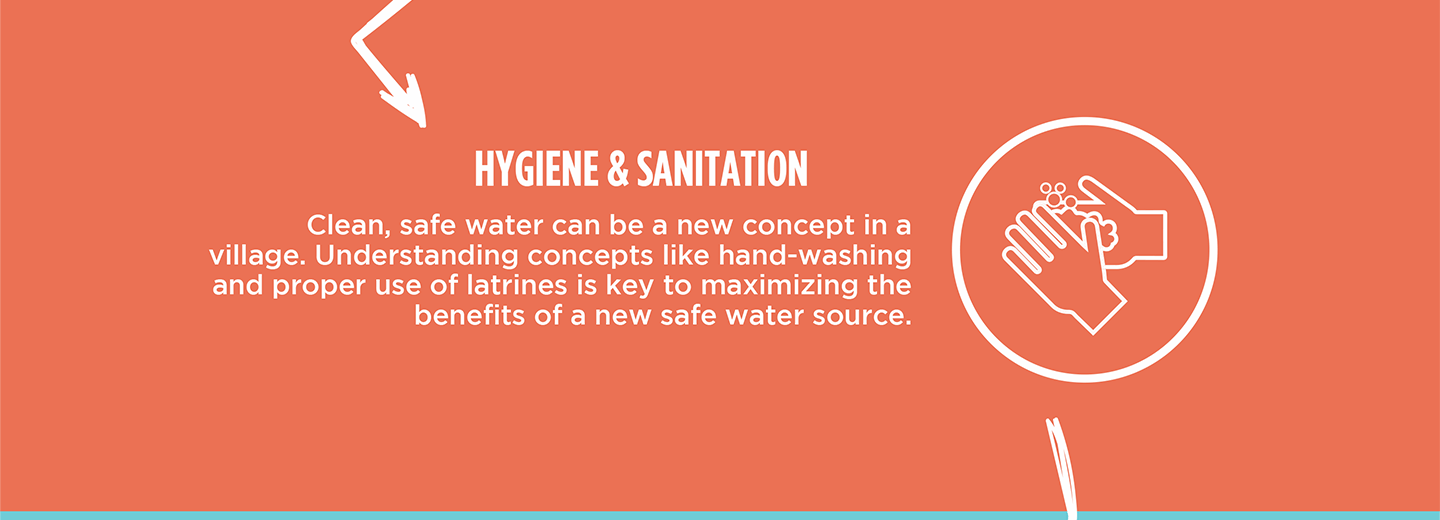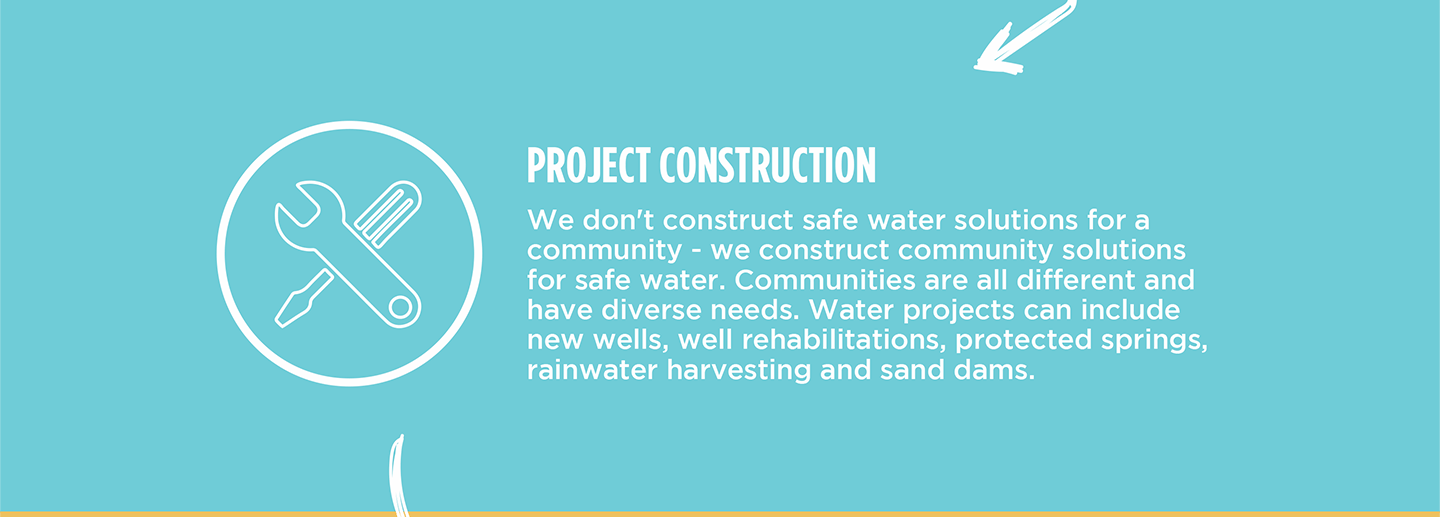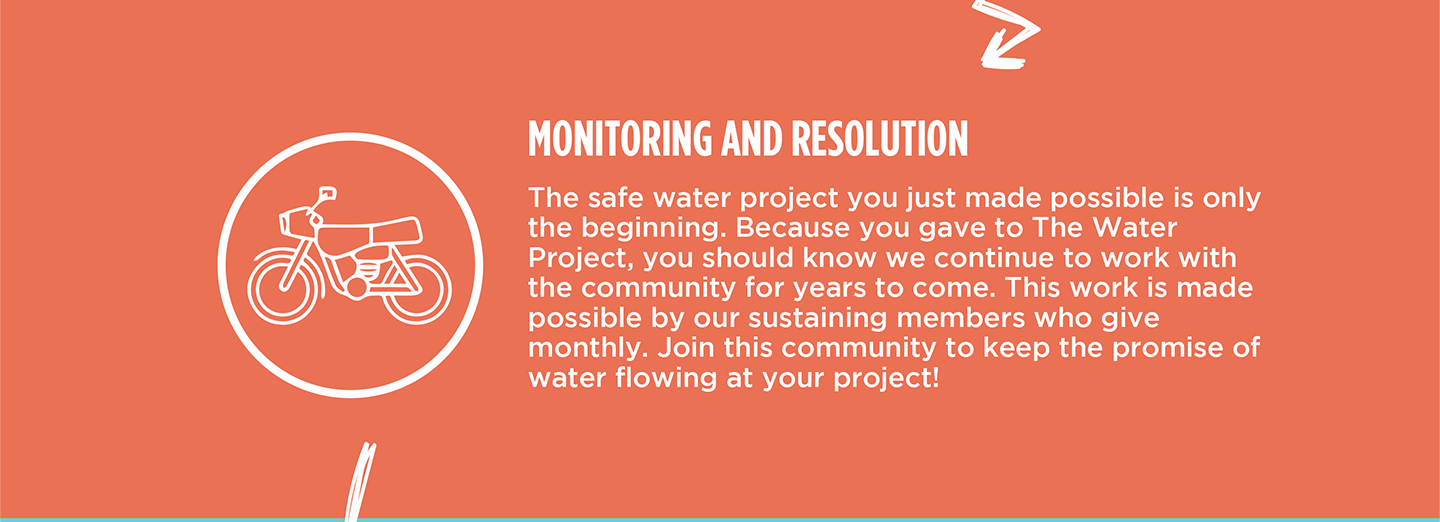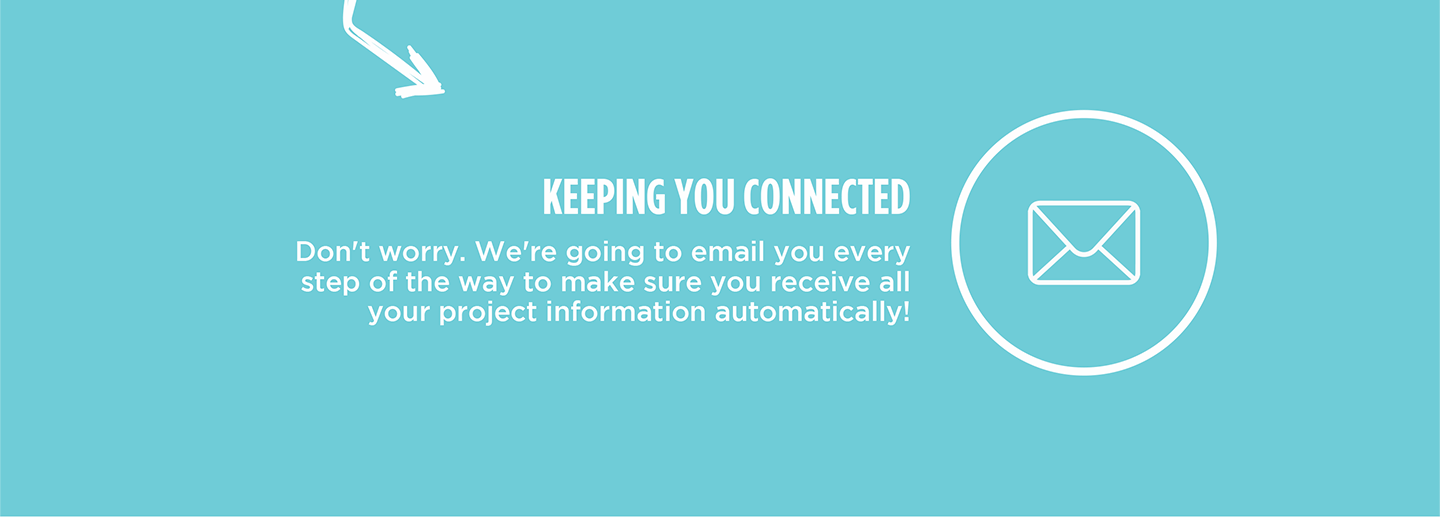Every day, the 225 community members living in Kihara suffer from a water crisis. They must expend an exhausting amount of energy to collect the minimum amount of water needed to survive.

Their closest water source, a scoop hole, is over an hour's journey away and quite obviously contaminated.
Even though he is only 11 years old, young Innocent is far too familiar with the daily struggle since he collects water for his family. It is a difficult way to live.

"I feel bad and afraid whenever I go to the scoop hole because the surrounding area is bushy. There’s a constant fear of encountering snakes, which makes it very risky. I am worried about falling sick because we share water from the scoop hole with animals, which makes it unsafe and increases the risk of waterborne diseases for me and my family," Innocent shared.

Innocent collects water at the scoop hole.
"I fell ill and stayed home for several days. Initially, I was given painkillers, but they didn’t help. So, my mother took me to Mihembero Health Center in Bwijanga, a government facility, where I was tested and diagnosed with typhoid. They provided me with medication, but it was insufficient for a quick recovery," Innocent continued.
"I was too weak to attend school, and the insufficient medication caused my recovery to take a bit longer.

Sadly, Innocent misses school when he is ill and loses valuable time to read and study when he has to collect water after school. Each day moves him further away from future opportunities.
"I often spend a lot of time fetching water, which leaves me with little time to concentrate on my studies and read my books, affecting my academic performance," Innocent lamented.

When we asked him what he dreams of having the freedom to do if he could access a safe, nearby water source, Innocent said, "Playing with my friends and having time to rest [and] spending more time dedicated to reading my books."
With more time dedicated to enjoying his childhood and improving his studies, he will surely build a brighter future.
"I want to become a teacher because I admire and am inspired by my school teachers," Innocent declared.
Steps Toward a Solution
Our technical experts worked with the local community to identify the most effective solution to their water crisis. They decided to drill a borehole well, construct a platform for the well, and attach a hand pump.
Well
Abundant water often lies just beneath our feet. Aquifers—natural underground rivers—flow through layers of sediment and rock, offering a constant supply of safe water. A borehole well is drilled deep into the earth to access this naturally filtered and protected water. We penetrate meters, sometimes even hundreds of meters, of soil, silt, rock, and more to reach the water underground. Once found, we construct a platform for the well and attach a hand pump. The community gains a safe, enclosed water source capable of providing approximately five gallons of water per minute. Learn more here!
Community Education & Ownership
Hygiene and sanitation training are integral to our water projects. Training is tailored to each community's specific needs and includes key topics such as proper water handling, improved hygiene practices, disease transmission prevention, and care of the new water point. Safe water and improved hygiene habits foster a healthier future for everyone in the community.
A Community-Wide Approach
In Uganda, we use a Community-Led Total Sanitation (CLTS) approach, which involves several meetings where community members evaluate their own hygiene and sanitation practices to encourage lasting change. During these sessions, natural leaders emerge, motivating the community to recognize and change unhealthy behaviors that affect everyone.
Communities then commit to ending open defecation before we install the water project. Every household builds a latrine to prevent disease and improve hygiene and sanitation in anticipation of their new water source. To support this effort, a Community Development Officer (CDO) is assigned. The CDO encourages each household to set up handwashing stations, animal pens, garbage pits, and dish-drying racks. These additions are crucial in preventing the spread of common diseases.

 Borehole Well and Hand Pump
Borehole Well and Hand Pump
 Rehabilitation Project
Rehabilitation Project








